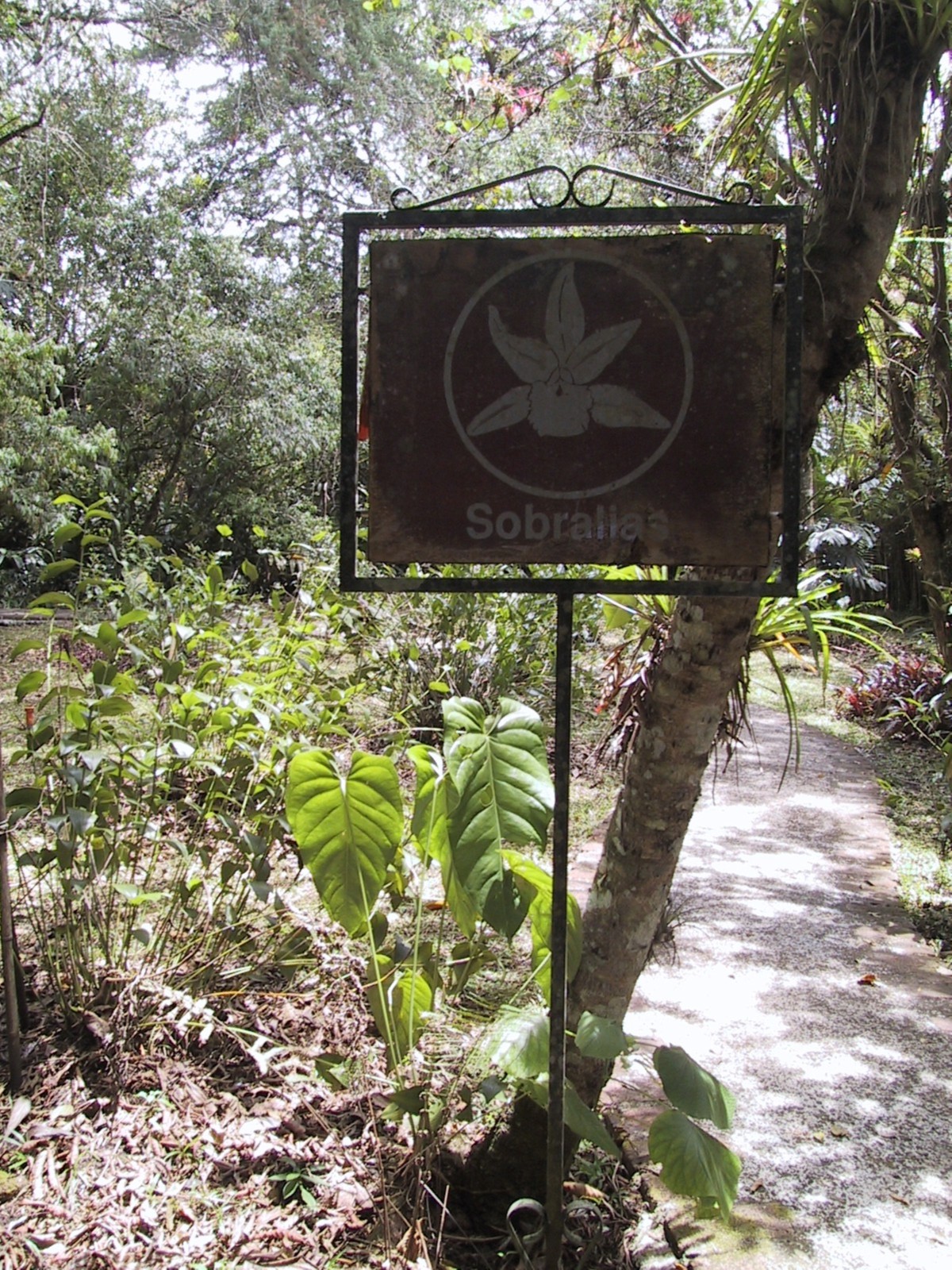
Edited 19 July 2009
© Nina Rach


Costa Rica is a charming and beautiful country in the heart of Central America. Home to the famous Lankester Botanical Gardens (near the town of Paraíso in Cartago); the Monteverde Reserve (including the Children's Eternal Cloud Forest), the Santa Elena Reserve; the Arenal Botanic Gardens; and the northern half of the International Peace Park with neighboring Panama, there is a wealth of botanical interest in this relatively small country.
According to the Manual of Costa Rican plants (2003), there are 1,318 distinct orchid species in the country. The Manual Project is a (US) National Science Foundation-funded collaboration between the Missouri Botanical Garden (MO), INBio, and the Museo Nacional de Costa Rica. Costa Rica's Instituto Nacional de Biodiversidad/National Biodiversity Institute
(INBio) produces the webpages for BIMS.
Lankester Gardens were established by British orchid enthusiast Charles Lankester West, in 1917. In 1973, his family donated the plants, and the American Orchid Society along with the Stanley Smith Foundation (UK) purchased the grounds and donated them to the University of Costa Rica to perpetuate for research and the enjoyment of the public. The gardens are 14 miles (23 km) east of San José, at 9° 47' N, 83° 53' W; at elevation 4,498 feet (1,371 meters).
In conjunction with the University of Costa Rica, Lankester Gardens recently began publishing the refereed journal Lankesteriana. According to The Cutting Edge, published by the Misouri Botanic Garden, "Almost overnight, Lankesteriana has assumed the role of Novon for the Costa Rican botanical community."
Thanks to the work of Robert and Kerry Dressler, among others, many of the Sobralias of Costa Rica have undergone taxonomic scrutiny and have been published for our reading pleasure.
[More to come...]
.
.

Robert Dressler, Kerry Dressler, and Leon Glicenstein are well-known speakers on the orchids of Costa Rica.
Robert L. Dressler (1993) Field Guide to the Orchids of Costa Rica and Panama. Ithaca: Cornell University Press, 374 pp.
Orchids of Costa Rica (field guide), INBio Editorial.
Barry E. Hammel, M. H. Grayum, C. Herrera, and N. Zamora (eds.) (2003) Manual de plantas de Costa Rica. Vol. III. Monocotiledóneas (Orchidaceae-Zingiberaceae). Monogr. Syst. Bot. Missouri Bot. Gard. 93: 1-884.
"This volume, the second in this series to be published, completes the Manual account of Costa Rican monocots. Ten families are treated here, entraining a total of 1861 spp. in 331 genera, but with 97% of the sp. total in just two families: Orchidaceae, by far the largest plant family in the country, with 1318 spp.; and Poaceae, with 488 spp. The basic features of this work are the same as already described for Vol. II [see The Cutting Edge 10(4): 7-8, Oct. 2003], except that there is no presentation or prologue this time around.
Contributors of family treatments for this volume include: John T. Atwood (SEL; Orchidaceae, pro parte); Garrett E. Crow (NHA; Pontederiaceae, Potamogetonaceae); Robert L. Dressler (FLA/MO; Orchidaceae, principal coordinator); Javier García-Cruz (XAL; Orchidaceae, pro parte); Eric Hágsater (AMO; Orchidaceae, pro parte); Carlyle A. Luer (MO; Orchidaceae, pro parte); Paul J. M. Maas and Hiltje Maas-van de Kamer (U; Triuridaceae, Zingiberaceae); J. Francisco Morales (INB; Poaceae, Smilacaceae); Gerardo Salazar (AMO; Orchidaceae, pro parte); Luis Sánchez Saldaña (AMO; Orchidaceae, pro parte); and Miguel A. Soto Arenas (AMO; Orchidaceae, pro parte)." [published in The Cutting Edge, Vol. XI(1), January 2004]
Phil Seaton (2003) "One man and his orchids," in: Orchids 72: 758-763.
"The featured gentleman is none other than Gabriel Barboza, who suddenly (at least, from our perspective) has gained prominence as the number one orchid dude in the Monteverde region [see also The Cutting Edge 9(1): 11-12, Jan. 2002]. Barboza is described as a former INBio parataxonomist (how could we not know this?) and an accomplished illustrator, who studied under Manual Orchidaceae contributor John Atwood, Kerry Dressler, the wife of Manual Orchidaceae coordinator Robert L. Dressler who (together with Atwood and Barboza) appears in one of the photos." [published in The Cutting Edge, Vol. XI(1), January 2004]
ING: Index Nominum Genericorum, URL:
http://ravenel.si.edu/botany/ing/ingForm.cfm from the U.S. National Herbarium, Dept. of Systematic Biology - Botany, Smithsonian Institution
International Plant Names Index [IPNI],
www.ipni.org
Great Map
